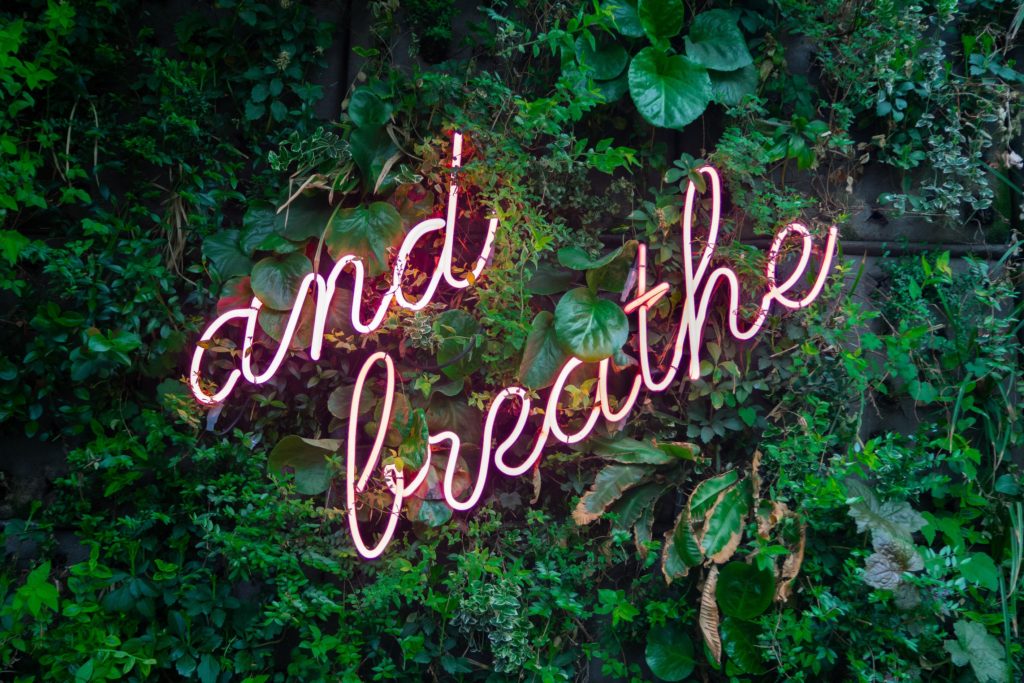It’s 8 ‘o’clock in the morning as I get off the train at Charing Cross station in London. The ‘open’ button by the carriage door begins flashing and beeping as I stand there waiting for someone else to push it, not having the confidence to do it myself.
My heart is pounding, body is sweating, legs gone to jelly, my mouth is dry, I feel sick and I find myself praying I was back at home in my bedroom where I am safe from harm.
“NO!” My inner voice screams.
“I won’t let you beat me, I’m going to this job interview if it’ the last thing I do”
The doors slide open and I step onto the platform. The sounds of the city peak over the horizon, the outbreath of the train having come to a stop screeches in my ears, and people bulldozer past my shoulder as I find myself frantically searching for the ‘way out’ sign.
I follow the flow of the direction people seem to be walking in, eachstep like walking through quicksand.
The further I walk the sicker I feel. How do you stop an anxiety attack?
Still no indication of the way out sign. I hyperventilate, the world starts spinning and my body begins to involuntarily shake.
I must get out now before I have a heart attack on the platform and become pigeon feed. Clambering onto a nearby bench I succeeded in what I had worried about all morning: I was having a panic attack.

If you have had a panic attack then you know it’s hard to put into words how it feels. There is not a word in any language that can encompass, express or communicate what a panic attack actually feels like, but if I were to try and pick one I would choose; ‘fear’.
See, the panic attack can feel different from person to person, changing in severity, longevity and consistency. My clients all use different language to describe their experience.
Where as nearly every client explains to me how they have developed an overwhelming fear of their panic attacks.
A fear of the symptoms. A fear of when the next one will happen. A fear of having one in public or with friends and family. A fear of the fear. And a fear of what constant fearing will do to their health.
The cycle goes on and so the panic attacks continue.
Here’s 7 panic attack treatments that you can use to manage your anxiety:
1. Bust The Myths
Panic attack vs heart attack.
Panic attacks are not dangerous and they will not give you a heart attack. This is a common myth that most of my clients are terrified of and though there is some accuracy in there, it’s important to set the record straight.
The only way it is possible to have a heart attack from a panic attack is if the person already has heart disease. A normal, healthy heart will not just suddenly stop during a panic attack.
A practical panic attack treatment I give my clients is to go to their GP and rule out any underlying heart problems. If your heart is happy and healthy a panic attack will not cause a heart attack.
2. Psychoeducation
Get to know anxiety and panic attacks. Be curious about them. Research them as an observer.
Anxiety is uncomfortable but not dangerous. In fact it is a completely normal process that can be explained in three parts; physiological, cognitive and behavioural.
Anxiety can be produced from two different areas of the brain; the cortex, which is the anxiety based on what we think about, and the amygdala, which is anxiety based on the reaction to our environment.
Panic attacks can occur from either the cortex or the amygdala. So thinking, and specifically some particular thoughts you are having, can cause you to have a panic attack.
For example my thoughts around my panic attacks used to be “oh ****! what if I have a panic attack at work? Oh ****! what if I pass out on the train and everyone stares at me? Oh ****! I feel unwell, what if I’m sick in front of everyone?
Then some time later my old friend Mr. Panic Attack would arrive.
How long do panic attacks last? Sometimes they feel like they will last forever, on average the peak of a panic will last less than one minute with the adrenaline easing off for the next twenty minutes.
So, what to do after a panic attack? You might still feel uncomfortable or even tiered but the panic will subside very quickly. Thank yourself for getting through the worst of it!

3. What If’ing
4. Relaxation
Acquiring the ability to relax on demand is a super power. In fact, if it were a superpower it would definitely trump being able to see through walls and being invisible.
The incredible thing is we have this superpower built into our body thanks to millions of years of evolution.
It is THE most powerful tool for instant calm.
In your body you have two systems that regulate your stress and relaxation responses: Your ‘sympathetic nervous system’ (SNS), which regulates your response to dangerous or stressful situations and your ‘parasympathetic nervous system’ (PNS), which regulates your relaxation responses.
Panic attacks are the result of your sympathetic nervous system being active for long periods of time in your life and frequently peaking.
Breathing is a surefire way of activating your PNS.
One of my favourite and simple techniques for panic attacks is belly breathing:
Simply breath in for five seconds, focussing on expanding your belly, and let the air fall out for seven seconds let the belly deflate.
Breath in for five. Hold. Breath out for seven.
Repeat for up to five minutes. It’s nothing complicated or some magical technique. Simple and very effective.
Practice this exercise whenever you have a spare minute in the day. Keep practicing until it becomes second nature to breathe and relax on command.
Remember wherever the body goes, the mind soon follows…

5. Defusion
6. Acceptance
Many clients ask me how to stop an anxiety attack or how to stop feeling anxious.
Sometimes thoughts stick. They are the particularly nasty ones that roll around your mind constantly and make you feel horrible.
If my clients are able to relax and defuse with their bothering thoughts but there is still one that triggers their anxiety and panic, we practice acceptance.
Now there are many different acceptance based techniques but one I use a lot is cognitive based and it is beautifully simple.
When a sticky thought occurs simply say “thanks mind” and move on with your day.
Seems almost trivial and insulting to be so simple but I assure it works. Showing yourself some compassion has a positive effect on overall mental health and wellbeing.
So when your mind says “oh ****! I’m going to faint and everyone will laugh at me, what if, what if, WHAT IF!!?!?!” Simply thank your mind for warning you of the danger and get on with your day.
7. Self Hypnosis
The final way to help manage panic attacks is to delve deeper into positive self talk, self affirmations and acceptance. There are plenty hypnotherapy for anxiety success stories.
Self hypnosis for anxiety is a powerful tool that can aid you in your journey to becoming panic free.
Here is a free self hypnosis and acceptance accelerator to start you on your journey.
You are very welcome to download the free hypnotherapy info pack to get you started.
What next…
I run a clinic called Flexible Mind, a Cognitive Behavioural Hypnotherapy Service in Tunbridge Wells, Kent, specializing in treatment for insomnia, stopping smoking, fear of flying, panic attacks and more.
If you’re looking for hypnotherapy near me or a hypnotherapist near me, I welcome you to contact me, even if it’s just to discuss your panic attacks or other anxieties you might be having.
My goal is for you to manage your panic attacks effectively while developing psychological flexibility, so you can live your life to the fullest.
If you are not able to have hypnotherapy in Tunbridge Wells or hypnotherapy in Kent, I also offer therapy online.
So good luck with your journey to become panic free and I wish you all the best.
I know you’ll do just fine.
For more information about anxiety please visit Anxiety UK






